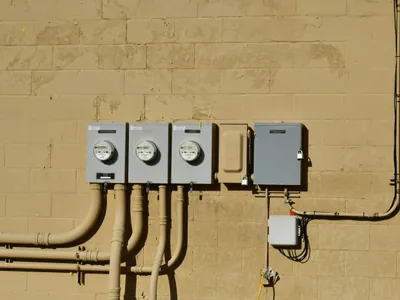Electrical Wiring Colors: Understanding the Code

When you look inside an electrical box, you'll see wires with different colored insulation. This isn't for decoration; it's a critical safety code that helps electricians identify the function of each wire in a circuit. Understanding this color code is fundamental for anyone attempting even the most basic electrical work safely.
🎨 The Primary Colors in Residential Wiring
For standard 120-volt circuits in your home, you will primarily encounter these colors.
💡 Other Colors You Might See
In more complex wiring situations, you may see other colors used for hot wires.
🔴 Red - Secondary Hot Wire
Often used as a second hot wire in 240-volt appliance circuits (like for a dryer). It's also commonly used as the "traveler" wire in three-way switch installations.
🔵 Blue & 🟡 Yellow - Hot Wires
Typically used as hot wires pulled through conduit. Blue is often used for travelers in three- or four-way switches, and yellow can be used for switch legs to control fans or lights.
⚠️ Important Exceptions and Rules
While the code is standard, there are a few key rules to remember.
Color Code Rules:
- White Wire as Hot: In some situations (like a "switch loop"), a white wire can be used as a hot wire. When this is done, it MUST be re-identified as hot by wrapping it with black electrical tape at both ends.
- Never Use Green for Anything But Ground: The color green is reserved exclusively for the ground wire. Using it for any other purpose is a serious safety violation.
- Assume All Wires are Live: Regardless of color, you should always treat every wire as if it were live until you have personally verified it is dead with a voltage tester.
The wire color code is a universal language for electricians. Following it strictly is essential for safe and predictable electrical systems.
Understanding wire colors is just the first step. For any work involving new wiring or complex circuits, trust a professional. The licensed electricians at The Box Advantage Group understand the code inside and out, ensuring all work is done safely and correctly.


